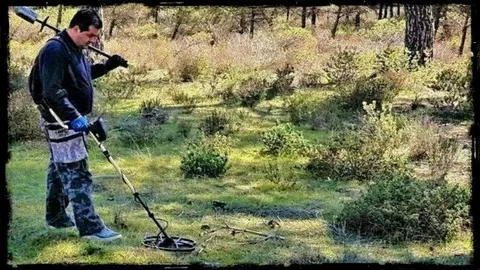Gold ore is one of the most sought-after natural resources in the world, valued for its beauty and intrinsic worth. Uncovering the Riches: Exploring the World of Gold Ore delves into the fascinating world of gold ore, uncovering its origins, properties, and the processes involved in its extraction. From the depths of the earth to the refining process, this exploration of gold ore promises to reveal the true riches and complexities of this coveted mineral. Join us as we embark on a journey to discover the secrets and allure of gold ore.
Uncovering the Riches: Exploring the World of Gold Ore is a comprehensive guide to the world of gold ore, covering everything from its formation and geological characteristics to its mining and extraction processes. The book delves into the history of gold mining and its cultural significance, as well as its modern-day uses and economic impact. It also explores the environmental and social implications of gold mining, providing a well-rounded understanding of this valuable and complex resource. With detailed information and stunning visuals, Uncovering the Riches is an essential resource for anyone interested in the world of gold ore.
Uncovering the Riches: Exploring the World of Gold Ore

Uncovering the Riches: Exploring the World of Gold Ore is a comprehensive guide to understanding the world of gold ore. The book covers various aspects of gold ore, including its formation, composition, extraction methods, and global significance. It also delves into the history of gold mining and its impact on societies and economies. This book is a valuable resource for geology enthusiasts, students, and anyone interested in learning more about the precious metal and its ore.
The Fascinating Journey of Gold Ore Extraction and Refinement

The journey of gold ore extraction and refinement begins with the mining of gold-bearing rocks or ores from the earth. This can be done through surface mining or underground mining, depending on the location and accessibility of the gold deposits.
Once the ore is extracted, it is then crushed and ground into a fine powder. This powder is then mixed with a solution, usually containing cyanide, to leach out the gold from the ore. The resulting solution, known as a “pregnant” solution, is then processed to separate the gold from the other minerals and impurities.
The next step in the process is the refinement of the gold, which can be done through various methods such as electrolysis, smelting, and chemical purification. Each method has its own advantages and disadvantages, and the choice of method depends on factors such as the purity of the gold needed and the quantity of gold being processed.
Overall, the journey of gold ore extraction and refinement is a fascinating and complex process that involves a combination of geology, chemistry, and engineering to turn raw ore into high-quality gold for various industrial and commercial purposes.
Understanding the Geological Formation of Gold Ore Deposits

Understanding the geological formation of gold ore deposits involves studying the processes and conditions that lead to the concentration of gold within specific rock formations. This can include examining the role of hydrothermal fluids, magma intrusions, and tectonic movements in concentrating gold within ore bodies. Additionally, factors such as pressure, temperature, and chemical reactions play a crucial role in the formation of gold deposits. By studying these geological processes, geologists can gain insights into the potential locations of gold deposits and the conditions under which they formed. This knowledge is essential for the exploration and extraction of gold resources.
The Economics of Gold Ore Mining and Its Global Impact

The economics of gold ore mining involves various factors such as the cost of extraction, processing, transportation, and environmental impact. Gold ore mining contributes significantly to local and global economies through job creation, infrastructure development, and revenue generation. In addition, the global impact of gold ore mining extends to influencing commodity prices, currency value, and economic stability in various regions. The demand for gold continues to drive the industry, with emerging markets and technological advancements playing a crucial role in shaping its economic significance.
The Science Behind Processing and Smelting Gold Ore

Gold ore is processed and smelted using a combination of physical and chemical processes. The first step in processing gold ore involves crushing the ore into smaller pieces, which are then ground into a fine powder. This powder is then mixed with a cyanide solution, which helps to dissolve the gold from the ore. The resulting solution is then filtered to remove any impurities.
The next step in the process is smelting, which involves heating the gold ore to high temperatures in a furnace. This causes the gold to melt and separate from the other materials in the ore. The molten gold is then poured into molds to form ingots or other shapes.
Throughout the processing and smelting process, various chemicals and materials are used to help separate the gold from the ore and remove impurities. These can include cyanide, fluxes, and other chemicals.
Overall, the science behind processing and smelting gold ore involves a combination of physical and chemical processes to separate the gold from the other materials in the ore and create pure gold products.
Exploring the Environmental Impacts of Gold Ore Extraction
Exploring the environmental impacts of gold ore extraction involves considering the effects on water quality, soil health, and air pollution. The process of extracting gold from ore can result in the release of harmful chemicals such as cyanide and mercury, which can contaminate water sources and harm local ecosystems. Additionally, the deforestation and soil erosion associated with gold mining can lead to long-term damage to the environment. Understanding and addressing these impacts is crucial for sustainable and responsible mining practices.
Investing in Gold Ore: Your Ultimate Guide to the Market
Investing in gold ore involves purchasing the raw material with the intention of profiting from its eventual sale or processing. Gold ore can be bought in the form of nuggets, flakes, or dust, and is typically sold by weight. Investors can choose to hold onto the ore as a physical asset, or they can sell it to refiners or collectors for a profit. It’s important for investors to understand the market for gold ore, including factors that influence its price such as demand, supply, and market conditions. Additionally, it’s essential to consider the costs associated with transporting, storing, and securing the gold ore. Before investing in gold ore, it’s recommended to conduct thorough research and consider consulting with a financial advisor or investment professional.
The Role of Gold Ore in Shaping Human History and Culture
See also: gold and metal detector
Gold ore has played a significant role in shaping human history and culture. For centuries, gold has been valued for its rarity, durability, and beauty, leading it to be used as a form of currency and a symbol of wealth and power. The pursuit of gold has driven exploration and colonization, leading to the rise and fall of empires and the shaping of global trade routes. Additionally, the discovery of gold has spurred technological advancements in mining and refining processes. In many cultures, gold holds religious and symbolic significance, playing a central role in ceremonies, rituals, and art. Overall, gold ore has had a profound impact on human societies, both economically and culturally.
The Allure of Gold Ore: Its Use in Jewelry and Accessories
The Allure of Gold Ore: Its Use in Jewelry and Accessories explores the uses of gold ore in creating stunning jewelry and accessories. It delves into the history of gold as a coveted metal, its significance in various cultures, and its role in the jewelry industry. The article also discusses the process of extracting and refining gold ore, as well as the craftsmanship involved in turning it into intricate and exquisite pieces of jewelry. Additionally, it highlights the appeal of gold ore in accessories such as watches, eyewear, and even technology gadgets. Overall, the article provides a comprehensive look at the timeless allure of gold ore in the world of fashion and luxury.
The Future of Gold Ore: Innovations in Mining and Sustainability
The future of gold ore mining involves innovations in technology and sustainability practices. Advancements in drilling and excavation techniques are expected to improve the efficiency of gold extraction. Additionally, the implementation of digital tools and real-time monitoring systems can enhance the operational performance and safety of mining operations.
Sustainability is a critical focus in the future of gold ore mining, with a growing emphasis on reducing environmental impact and promoting responsible resource management. This includes initiatives to minimize water and energy consumption, as well as efforts to mitigate the ecological effects of mining activities.
Furthermore, there is a shift towards greater community engagement and collaboration with local stakeholders to ensure that gold mining operations benefit the surrounding areas and contribute to socio-economic development.
In summary, the future of gold ore mining entails a combination of technological advancements and sustainable practices to drive efficiency, minimize environmental impact, and foster positive social outcomes.

